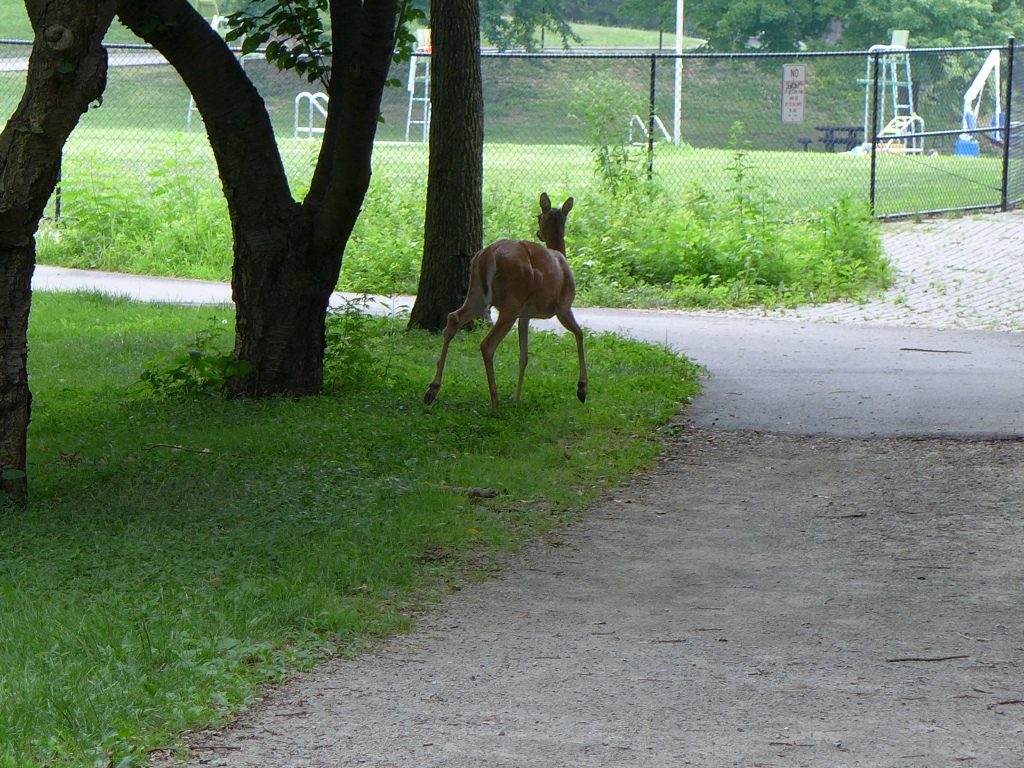
4 August 2019
White-tailed deer are numerous and very tame in Schenley Park. Last week I encountered a doe with twin fawns near the swimming pool.
The family became alert while I was staring at them, but the mother has learned that we humans aren’t dangerous and is teaching it to her kids. How many generations does it take for the herd to become this tame?
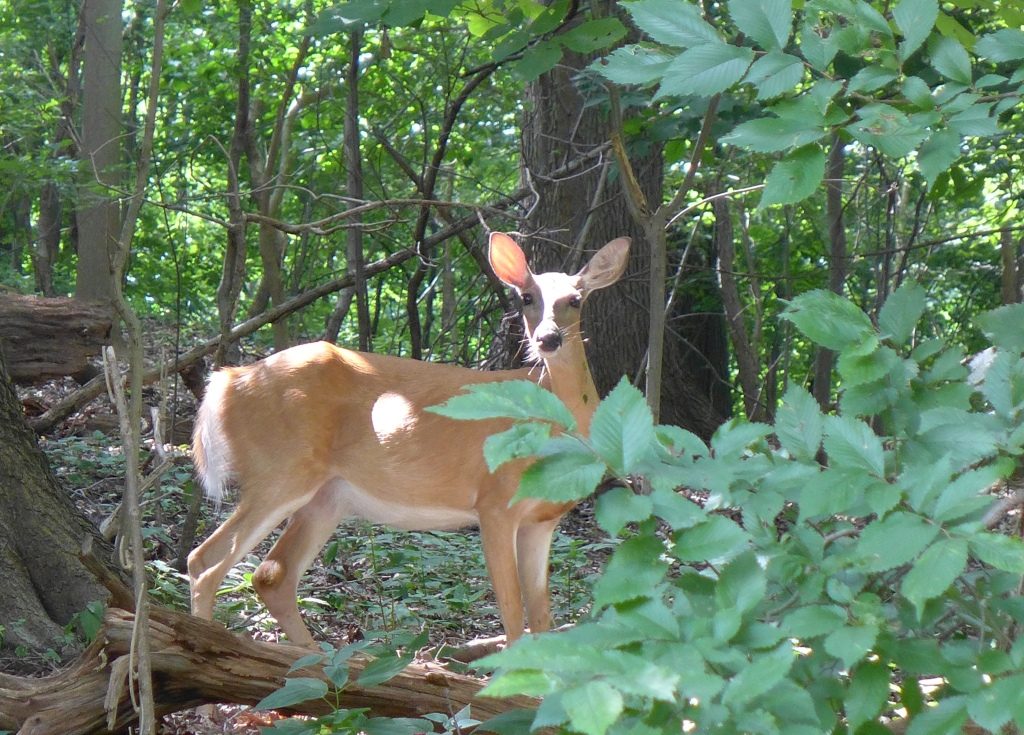
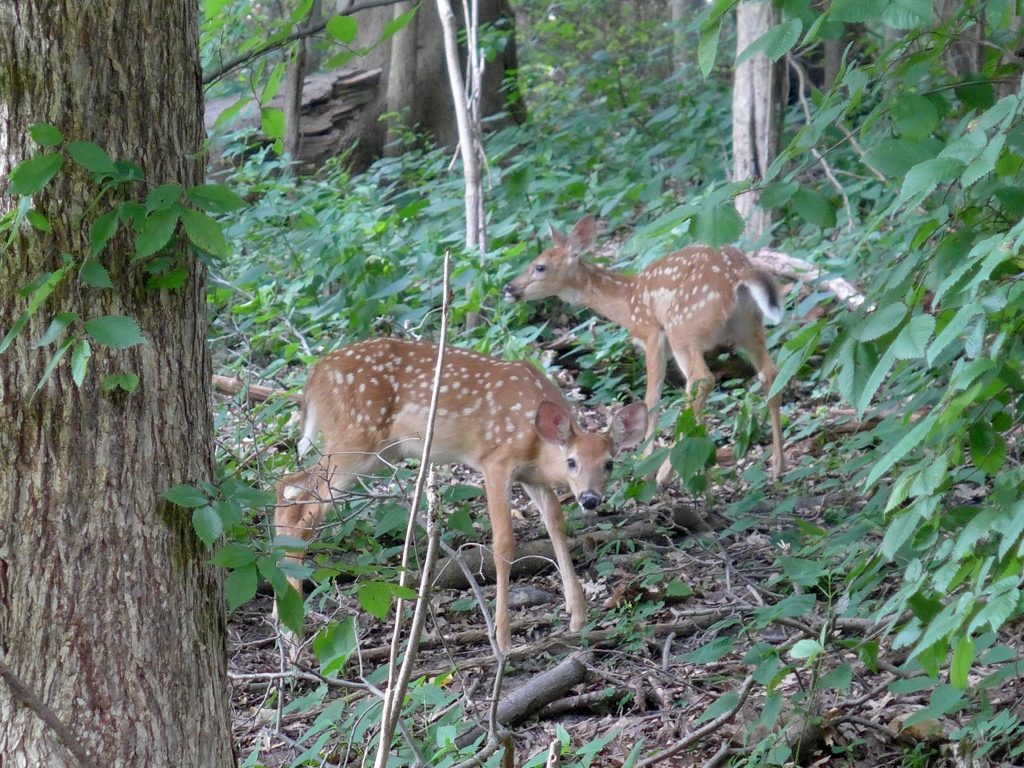
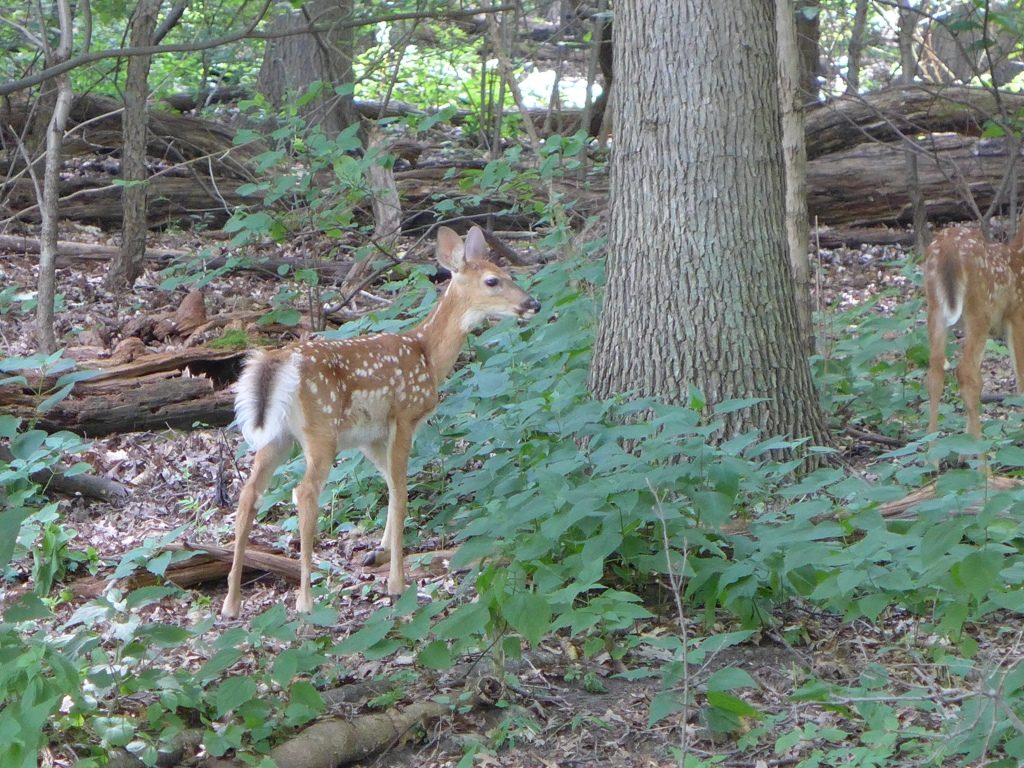
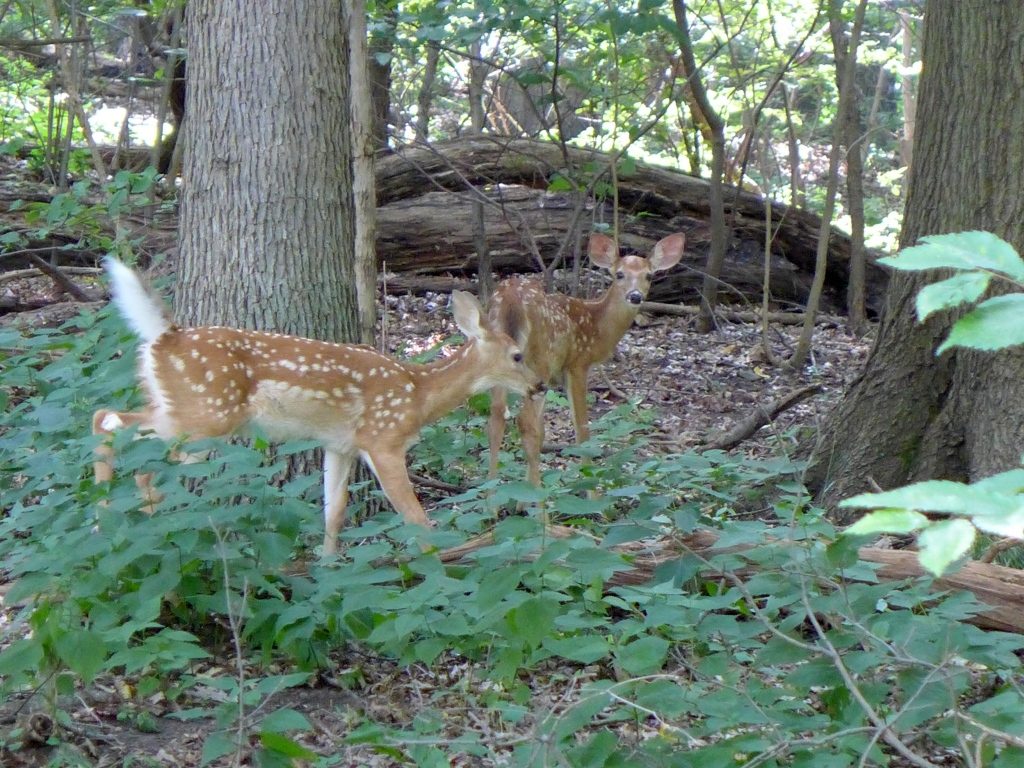
In the past ten years I’ve seen the landscape change in Schenley Park while the deer population has grown exponentially. Where there used to be thick slopes of false Solomon’s seal and yellow jewelweed there is nothing green now, just carpets of fallen leaves. Having eaten the good stuff they are working on less tasty food, avoiding the poisonous plants such as white snakeroot at their feet in these photos. Some day their range will fail them.
I now suspect that just as a deer herd lives in mortal fear of its wolves, so does a mountain live in mortal fear of its deer. And perhaps with better cause, for while a buck pulled down by wolves can be replaced in two or three years, a range pulled down by too many deer may fail of replacement in as many decades.
— Aldo Leopold, “Thinking Like A Mountain,” A Sand County Almanac
p.s. I saw this 8-point buck in Schenley park yesterday, 3 August 2019.
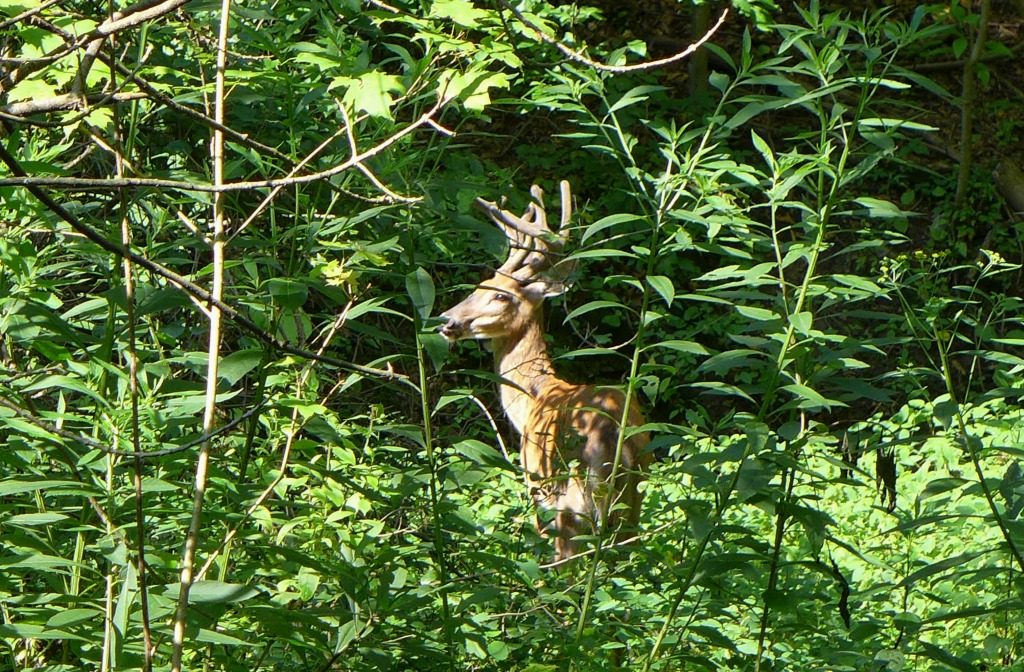
Also see this article: Too Many Deer: A Bigger Threat to Eastern Forests than Climate Change?
(photos by Kate St. John, Schenley Park, 29 July 2019)
That 8-pt has pretty impressive main beams and tines. That’s no youngun!
“Too Many Deer: A Bigger Threat to Eastern Forests than Climate Change”
You need to put the link to this article in your post. You posted the article 7-29-19. What an eye opener it is.